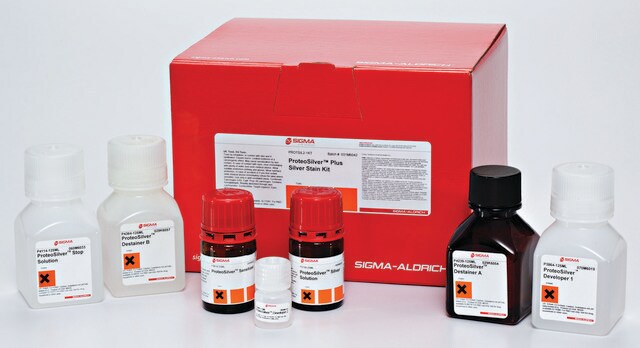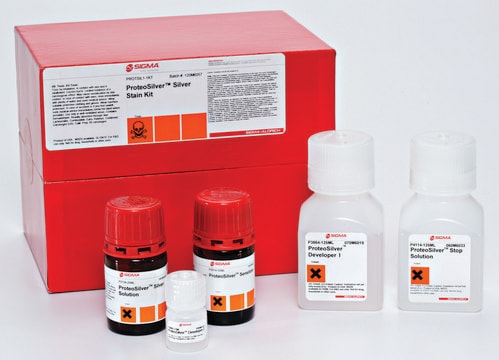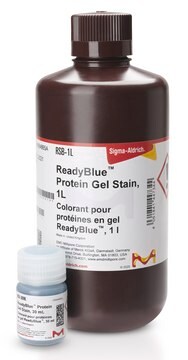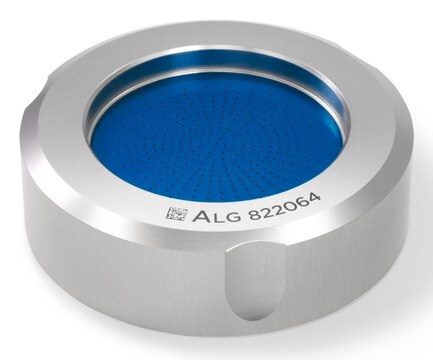S5692
SYPRO® Orange Protein Gel Stain
Sinônimo(s):
SYPRO® dye, protein gel stain
About This Item
Produtos recomendados
prazo de validade
≥6 mo. (when stored desiccated and protected from light at room temperature, 4 °C or 20 °C.)
Nível de qualidade
técnica(s)
protein staining: suitable
fluorescência
λex 300,470 nm; λem 570 nm
Descrição geral
SYPRO Orange is:
- Highly sensitive. The stain can detect 1 to 2 ng of protein per minigel band, making it more sensitive than Coomassie Brilliant Blue or silver staining.
- Rapid. Staining is complete in less than one hour
- Simple. After electrophoresis, the gel is stained, rinsed and photographed; no fixation or destaining steps are required
- Compatible with standard laboratory equipment. Stained proteins can be visualized with a standard 300 nm UV transilluminator or laser scanner.
- Cost-effective. Staining with SYPRO Orange is less expensive than silver staining and requires less time.
- Low protein-to-protein variability. The dye interacts with the SDS coat around the protein, giving more consistent staining between different types of proteins compared to Coomassie or silver staining.
- Selective for proteins. SYPRO Orange detects proteins as small as 6.5 kDa and does not stain nucleic acids or lipopolysaccharides. It does stain glycosylated proteins.
- Broad linear range of detection. The fluorescence intensity of the stained bands is linear with protein quantity over three orders of magnitude (a much broader range than either Coomassie or silver staining).
Aplicação
Atenção
Informações legais
produto relacionado
Código de classe de armazenamento
10 - Combustible liquids
Classe de risco de água (WGK)
WGK 3
Ponto de fulgor (°F)
188.6 °F - closed cup
Ponto de fulgor (°C)
87 °C - closed cup
Certificados de análise (COA)
Busque Certificados de análise (COA) digitando o Número do Lote do produto. Os números de lote e remessa podem ser encontrados no rótulo de um produto após a palavra “Lot” ou “Batch”.
Já possui este produto?
Encontre a documentação dos produtos que você adquiriu recentemente na biblioteca de documentos.
Artigos
To meet the great diversity of protein analysis needs, Sigma offers a wide selection of protein visualization (staining) reagents. EZBlue™ and ProteoSilver™, designed specifically for proteomics, also perform impressively in traditional PAGE formats.
Nossa equipe de cientistas tem experiência em todas as áreas de pesquisa, incluindo Life Sciences, ciência de materiais, síntese química, cromatografia, química analítica e muitas outras.
Entre em contato com a assistência técnica








